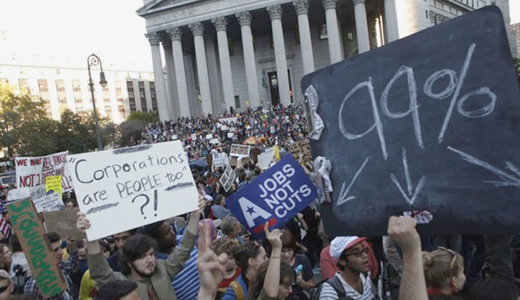
The 1 percent vs. the 99 percent – the slogan of the Occupy movement – is a broad, big tent notion that mirrors an objective economic reality in which the lion’s share of the wealth created by labor is appropriated by individuals and families at the very top of the income tier.
But what it isn’t is an accurate estimate of the balance of class, social, and political forces across the country at this moment. Nor does it capture what the main political challenge is between now and when millions cast their votes in November.
The country is far more divided than the Occupy slogan suggests. And the immediate political challenge isn’t to bring to heel corporate capital in toto, but to defeat Donald Trump and his Republican minions – and the sections of capital that support them – in a landslide this fall. In case it needs saying, doing the latter is a necessary step if we are to do the former.
I wish we could set our sights higher. But wishful thinking is never a good strategic, tactical, or programmatic guide. There is no substitute for clear-eyed, sober, and dialectical thinking, framed, of course, by a larger political vision.
Which means – like it or not – that we still have ground to cover, stages of struggle to traverse, and tactics to elaborate before the American people square off directly and decisively against the dominant sections of the corporate/wealthy class – the 1 percent.
And even when we do, we will still need a politics that combines soberness and complexity with a readiness to seize the initiative. Simplistic schemes that rule out any change of tempo or tack, any alteration of demands and slogans, and any room for “unreliable and conditional” allies will do little to effect transformative social change – not to mention win the current election battle.
That said, even if the Occupy slogan doesn’t capture the main political dynamic of the present moment, its value lies in the fact that it stretches out our thinking, gives us a star to steer by, and serves as a reminder that building a sustained movement of the immense majority is a real – not wishful – possibility in the not too distant future.
This article originally appeared on the author’s blog, SamWebb.org.
Photo: Occupy Wall Street protesters join a labor union rally in Foley Square in New York’s Financial District on October 5, 2011. Jason DeCrow | AP







